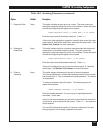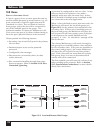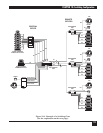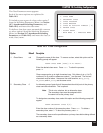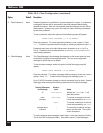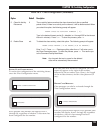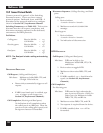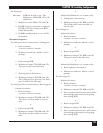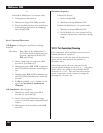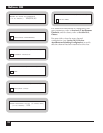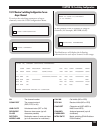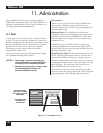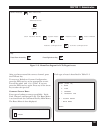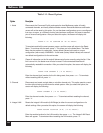
CHAPTER 10: Switching Configuration
125
For Dual port
Idle State: DTR can be high or low. The
Multiserver holds DSR, CTS, CD,
and RI low.
1. Multiserver raises DSR, CTS, and CD.
2. If DTR is high, no response is required.
If DTR is low, device must raise DTR
within 60 seconds.
3. If ABR is enabled, then a <cr> will be
forwarded.
Disconnect Sequence
For Dual port that is connected as a Calling port:
1. Device initiates
<break><break><break>.
2. Multiserver sends the ENTER CLASS
prompt.
or
1. Device drops DTR.
2. Multiserver drops CTS, DSR, and CD.
The port is now in the idle state.
or
1. Receiving device disconnects.
2. Multiserver drops CTS, DSR, and CD.
The Calling port (in this case, the Dual
port) is now in the idle state.
For Dual port that is connected as a Receiving port:
Initiated by device:
1. Device initiates
<break><break><break>.
2. Multiserver drops CTS, DSR, and CD.
The device can now make or receive
calls.
or
1. Device drops DTR.
2. Multiserver drops CTS, DSR, and CD.
The device can now make or receive
calls.
or
Initiated by Multiserver (or remote end):
1. Calling device disconnects.
2. Multiserver drops CTS, DSR, and CD.
The called device can now make or
receive calls.
For Calling port
Initiated by device:
1. Device initiates
<break><break><break>.
2. Multiserver sends the ENTER CLASS
prompt.
or
1. Device drops DTR.
2. Multiserver drops CTS, DSR, and CD.
The port is now in the idle state.
or
Initiated by Multiserver (or remote end):
1. Receiving device disconnects.
2. Multiserver sends the ENTER CLASS
prompt.
For Receiving port
Initiated by device:
1. Device initiates
<break><break><break>.
2. Multiserver drops CTS, DSR, and CD.
3. Port is marked out-of-service until device
acknowledges disconnect by dropping
then raising DTR.
or
1. Device drops DTR.
2. Multiserver drops CTS, DSR, and CD.
3. Port is marked out-of-service until device
acknowledges disconnect by dropping
then raising DTR.



